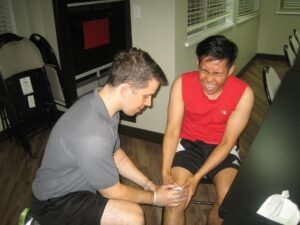Bleeding is best described as the loss of blood. It typically refers to blood loss within the body or loss of blood outside the body. In most cases, internal bleeding can occur once the blood leaks out through damage to an organ or blood vessel. As for external bleeding, it can occur once the blood exits via a break on the skin or if the blood exits via a natural opening in the body such as the rectum, mouth or vagina.

Causes of bleeding
It is a known fact that bleeding is a common symptom that can be caused by various conditions and incidents. There are several possible causes which include:
• Medical conditions that include leukemia, hemophilia, liver disease, menorrhagia, vitamin K deficiency, bowel obstruction, thrombocytopenia, brain trauma, lung cancer, acute bronchitis and congestive heart failure.
• Traumatic bleeding is caused by any injury and the common types include bruises, abrasions, lacerations, puncture wounds, gunshot wounds and crushing injuries.
• Medications can increase your risk or even cause it. Certain medications responsible which include radiation therapy, blood-thinning medications and antibiotics used on a long-term basis.
Emergency cases
In case it is severe, it is best to call for emergency assistance right away. If internal bleeding is suspected, it is life-threatening and emergency assistance is required. Individuals who suffer from bleeding disorders or currently taking blood-thinning medications should seek medical care to stop the bleeding as soon as possible. It is also important to seek help for the following:
• The bleeding could not be controlled by pressure
• Individual has gone into shock or has fever
• Wound requires the application of a tourniquet
• Caused by a serious injury
• Wound requires stitches to stop the flow of blood
• Foreign objects are embedded within the wound
• Wound is infected
• Injury was caused by a bite from animals or human
When calling for help, the emergency services will provide you with instructions on what to do and their estimated time of arrival. In most cases, you will be advised to continue the application of pressure on the wound and continue to reassure the individual. In some cases, you will be instructed to position the individual down in order to minimize the risk of fainting.
How bleeding is treated
When treating bleeding, it is vital to determine why there is loss of blood and to stop it right away. In case it is caused by a medical condition, emergency care is needed immediately.
For traumatic cases, you have to call for emergency assistance right away and there are certain first aid measures to perform while waiting for the healthcare professionals.
• Try to calm the individual and provide reassurance. The excess flow of blood can be quite scary and reassurance is vital to avoid shock.
• Position the individual down to minimize risk of fainting. Elevate the part that is affected, if possible.
• Loose debris and foreign particles must be removed carefully from the wound. For large items such as arrows, knives or weapons, leave them where they are since removing them will cause more damage. Utilize pads and bandages to hold the object in place and absorb the bleeding.
• Use a clean cloth, bandage or your hands to apply direct pressure on the wound.
• Apply medium pressure until the bleeding slowed down and eventually stops.
• Do not remove the cloth once the bleeding stops. Apply an adhesive tape around the dressing and hold it in place.
If the bleeding could not be controlled, the medical professionals know what to do once they arrive.
